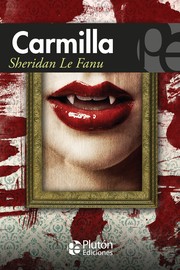MomoTheRed reviewed Carmilla by Joseph Sheridan Le Fanu
Interesting dive into the origins of vampire novels
4 stars
Very interesting read! Gives some insight into the early stages of vampire novels and how connected it was with sexual desire and queerness from the very beginning. And although the perspective on queerness is definitely a negative one, I still think there is something to be gained from this in the name of reclaming what they use against us. Can highly recommend it, especially since such a short read.
Very interesting read! Gives some insight into the early stages of vampire novels and how connected it was with sexual desire and queerness from the very beginning. And although the perspective on queerness is definitely a negative one, I still think there is something to be gained from this in the name of reclaming what they use against us. Can highly recommend it, especially since such a short read.



